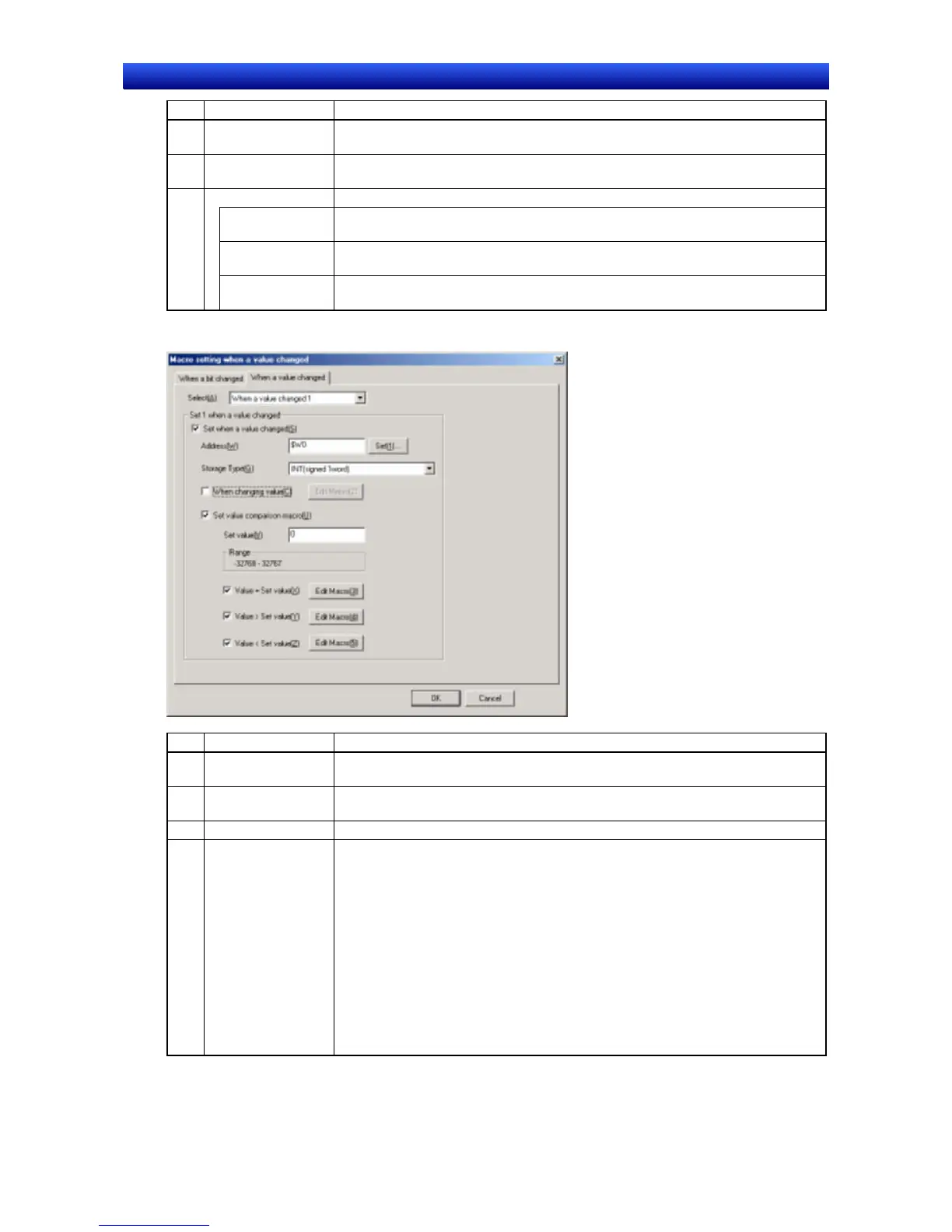Section 6 Programming Macros 6-1 Registering Macros
NS-Designer Operation Manual NS-Designer Operation Manual NS-Designer Operation Manual
No. Setting Details
1 Select Selects the bit change macro to set from When a bit changed 1 to When a bit
changed 10.
2 When changing
value
Causes the bit change macro specified in 1, above, to be executed.
3 Action timing Sets the timing for executing the macro.
Execute when
ON/OFF
Executes the macro when the specified bit turns ON or OFF.
Execute when
ON
Executes the macro when the specified bit turns ON.
Execute when
OFF
Executes the macro when the specified bit turns OFF.
When a Word Value Changes
No. Setting Details
1 Select Selects the bit change macro to set from When a value changed 1 to When a
value changed 10.
2 Set x when a value
changed
Causes the value change macro specified in 1, above, to be executed.
3 Address Specify the communications address to be monitored.
4 Storage type Sets the storage type of the communications address to one of the following 10
types:
INT (signed 1 word)
UINT (unsigned 1 word)
DINT (signed 2 words)
UDINT (unsigned 2 words)
BCD2 (unsigned 1 word)
BCD2 (unsigned 2 words)
BCD1 (signed [leftmost digit: F] 1 word)
BCD1 (signed [leftmost digit: F] 2 words)
BCD2 (signed [leftmost bit: 1] 1 word)
BCD2 (signed [leftmost bit: 1] 2 words)
6-3
